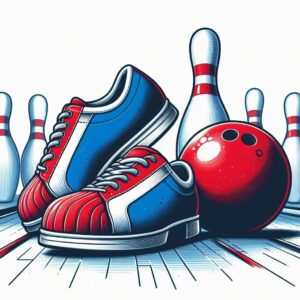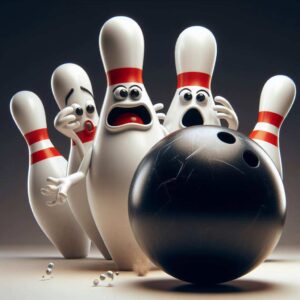Have you ever stepped into a bowling alley and noticed a distinct, almost mesmerizing aroma lingering in the air? It’s a scent that’s become synonymous with the sport of bowling – a blend of various fragrances that seem to emanate from the bowling balls themselves.
But why exactly are bowling balls scented? The answer lies in a unique combination of performance enhancement, maintenance, and marketing strategies that have been woven into the fabric of the bowling industry.
In this comprehensive guide, we’ll delve deep into the world of scented bowling balls, exploring the fascinating history, science, and business considerations behind this intriguing practice. Get ready to unravel the mysteries that have kept bowlers captivated by these aromatic spheres for decades.
Historical Background of Scented Bowling Balls
Bowling has a rich history that dates back to ancient civilizations, where various forms of the game were played with primitive balls and pins. However, it wasn’t until the late 20th century that the practice of scenting bowling balls gained traction.
As bowling ball technology advanced, manufacturers began experimenting with reactive resin coverstocks – a type of material that allows for increased traction and hooking potential on the lanes. It was during this time that they discovered the benefits of adding scented additives to these reactive resin materials.
Initially, scenting was primarily used as a means to enhance the performance and longevity of bowling balls. However, it didn’t take long for manufacturers to realize the potential marketing advantages of offering distinctly scented bowling balls to their customers.
Performance Enhancement
At the core of scented bowling balls lies a strategic performance enhancement technique. The scented additives used in the manufacturing process are specifically designed to interact with the lane surface, increasing traction and improving the ball’s hooking potential.
These additives work by creating a slight tackiness on the surface of the ball, allowing it to grip the lane more effectively during the release and roll. This increased traction translates into a more pronounced hook, which is crucial for advanced bowling techniques like curve shots and strike ball delivery.
Different scents can have varying effects on ball performance. For instance, some scents may provide more traction, while others may promote a smoother or sharper hook arc.
Experienced bowlers often experiment with different scented balls to find the perfect combination that suits their playing style and lane conditions.
Ball Maintenance and Durability
In addition to performance enhancement, scented additives play a vital role in preserving the integrity and longevity of bowling balls, particularly those made with reactive resin coverstocks.
Reactive resin is a porous material that can be susceptible to discoloration, cracking, and other forms of damage over time. The scented additives act as a preservative, helping to protect the ball’s surface and maintain its aesthetic appeal.
Furthermore, these additives can also help extend the lifespan of a bowling ball by minimizing the effects of friction and wear during repeated use. By reducing the ball’s susceptibility to damage, scented additives contribute to its overall durability, allowing bowlers to enjoy their favorite equipment for longer periods.
Marketing and Branding
While performance and maintenance are significant factors, the allure of scented bowling balls extends far beyond their functional benefits. In the competitive world of bowling equipment manufacturing, scented balls have become a powerful marketing and branding tool.
Unique and distinctive scents can create a strong association between a bowling ball and its brand, fostering consumer loyalty and recognition.
Manufacturers often invest significant resources into developing signature scent combinations that not only appeal to bowlers but also differentiate their products from those of their competitors.
Popular scents like cherry, lemon, and even bacon have become synonymous with certain bowling ball brands, creating a sensory experience that transcends mere performance. Bowlers may develop emotional connections with these scents, associating them with cherished memories, personal achievements, or their favorite bowling centers.
Health and Safety Considerations
While scented bowling balls offer numerous benefits, it’s essential to address potential health and safety concerns associated with their use. Some individuals may have allergies or sensitivities to certain scents, which could lead to adverse reactions or discomfort.
To mitigate these risks, manufacturers and bowling centers must adhere to strict regulations and guidelines regarding the use of scented additives. This includes ensuring proper ventilation, providing clear labeling, and offering alternative options for those with sensitivities.
Additionally, the environmental impact of scented additives should be carefully considered. Many manufacturers are embracing eco-friendly practices and exploring sustainable alternatives to traditional scented additives, ensuring that the enjoyment of bowling does not come at the expense of the planet.
DIY Scenting Methods
For bowlers who prefer a more hands-on approach, there are various DIY methods available for scenting bowling balls at home. This can be an appealing option for those seeking personalized scents or experimenting with different fragrance combinations.
One popular technique involves using essential oils or fragrance oils designed specifically for bowling ball scenting. These oils can be carefully applied to the ball’s surface, following specific application techniques to ensure even distribution and long-lasting scent.
However, it’s important to exercise caution when attempting DIY scenting methods. Improper application or the use of unsuitable materials can potentially damage the ball or compromise its performance. Consulting with experienced bowlers or seeking guidance from reputable sources is highly recommended before embarking on any DIY scenting projects.
Conclusion:
The practice of scenting bowling balls is a fascinating intersection of performance, maintenance, and marketing strategies. From enhancing traction and improving hook potential to preserving the ball’s longevity and creating brand recognition, scented bowling balls have left an indelible mark on the sport.
As the bowling industry continues to evolve, it’s likely that manufacturers will explore even more innovative and sustainable scenting techniques, catering to the ever-growing demand for unique and personalized bowling experiences.
Whether you’re a seasoned bowler or a casual enthusiast, there’s no denying the allure of scented bowling balls. With each roll down the lane, these aromatic spheres not only captivate our senses but also remind us of the rich tapestry of tradition, science, and ingenuity that has shaped the sport we love.
So, the next time you step into a bowling alley and catch a whiff of that distinctive aroma, take a moment to appreciate the intricate world of scented bowling balls and the passion that has gone into crafting these remarkable pieces of equipment.





